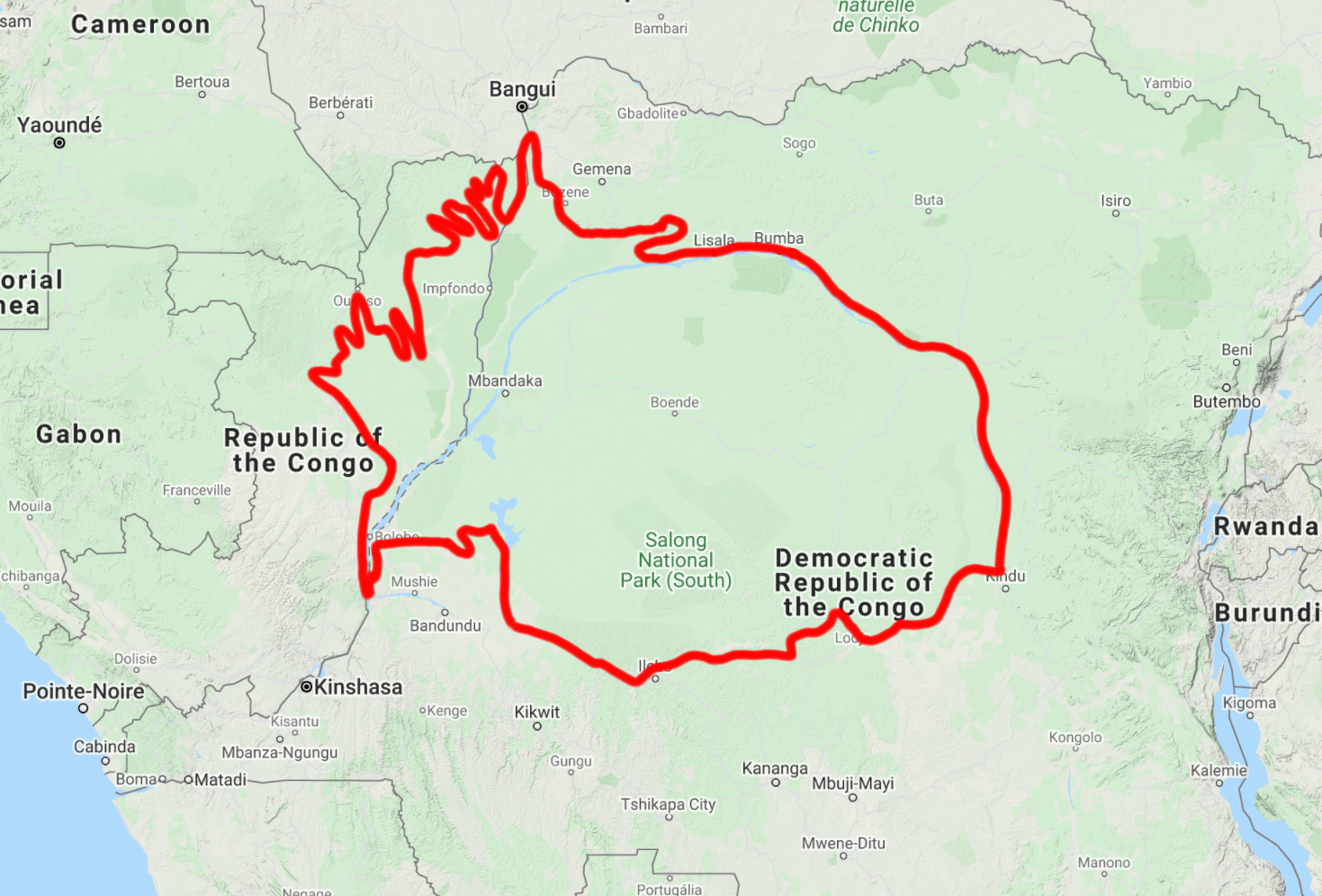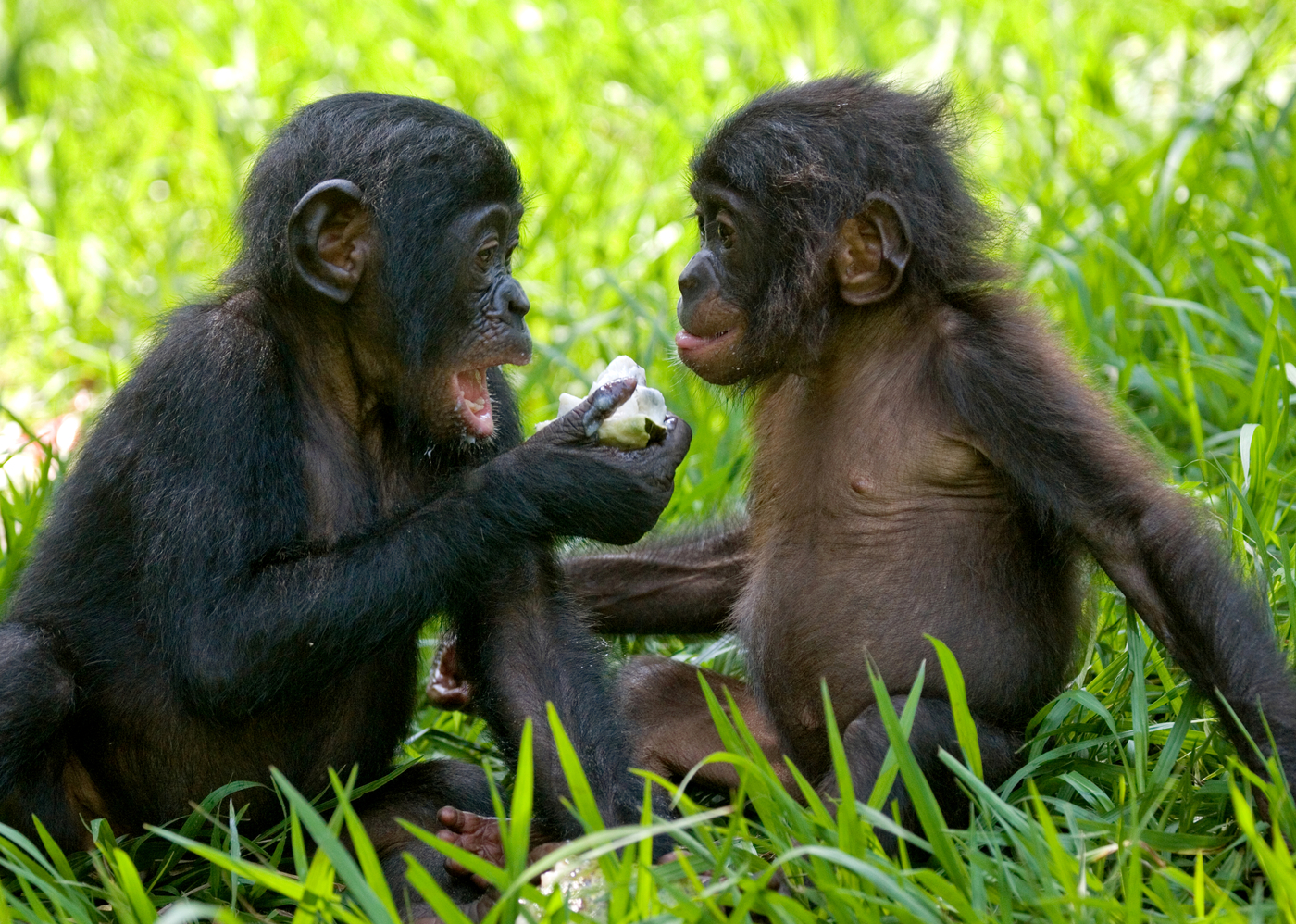Exploring the bonobos connection to the forest ecosystem
- Nature Conservation
- Land Conservation
- Iconic Species
- Wildlife
- Mammals
- Equatorial Afrotropics
- Afrotropics Realm
One Earth’s “Species of the Week” series highlights an iconic species that represents the unique biogeography of each of the 185 bioregions of the Earth.
Bonobos (Pan paniscus) join chimps as humans’ closest relatives. They are known as the pygmy chimpanzee and although they are very alike to the chimpanzee (Pan troglodytes), the Bonobos is a separate species in their own right.
The Bonobo has a very gracile figure, with a slim long torso, narrow shoulders, a thin neck, a small head, and long legs. Its face has softly marked brow ridges above the eyes, pink lips, small ears, and wide nostrils, and the long hair on its head forms a parting.

The bonobo is the iconic species of the Central Congolian Tropical Forests bioregion (AT14).
Adult female bonobos are smaller than adult males. The average body mass is of 45 kg in males while females weigh 33kg. The total length of bonobos from the nose to the rump while on their four extremities is 70 to 83 cm.
Bonobos love to spend time in trees as much as on the ground. Their locomotion is on all fours, called “quadrupedal knuckle-walking.” They range over wide areas in large nomadic communities. As omnivorous frugivores, they spend most of the day eating fruits and leaves in the canopy and have skills to take eggs from nests and honey from bee hives. They will also catch small vertebrates, like flying squirrels and duikers, and invertebrates as well, and in some instances, they may feed on a lower-order primate.

Female bonobos care for their infant for over four years, which means their population is slow to regenerate. In these matriarchal communities, females are prone to having several sexual partners and will even bring lone males into the group by courting them instead of keeping them away with confrontation. This does not bother males, which know that they will be favored as long as they behave well with their female partner.
Bonobos communicate through vocal means, facial expressions, and hand gestures. Their emotional intelligence has led scientists to interact with some of them in experimental settings. Some bonobos can communicate through a keyboard with geometric symbols and respond to spoken sentences.
Bonobos are found only south of the Congo River and north of the Kasai River (a tributary of the Congo) in the humid forests of the Democratic Republic of Congo. The Democratic Republic of Congo (DRC) is among the so-called “Seventeen Megadiverse States of the World” that hold 70% of the planet’s terrestrial biodiversity and is home to original nations. The seventeen megadiverse countries are: Australia, Brazil, China, Colombia, Ecuador, United States, Philippines, India, Indonesia, Madagascar, Malaysia, Mexico, Papua New Guinea, Peru, Democratic Republic of Congo, South Africa, and Venezuela.
The Congo River acts as a natural boundary between the chimpanzees to the north and the bonobos to the south. They have a tremendous ecological role as they disperse seeds that can germinate when they have passed through their digestive tracts. Plants such as Dialium greatly rely on the dispersal agency of bonobos.
Bonobos have been hunted for meat for decades because of the scarcity of food crops and the inaccessibility to markets during the wars in the 1990s and the continued conflict and unrest today.
In a context of permanent tension among local communities due to illegal extractive activities and forced labor, Jane Goodall created the Bonobo Peace Forest, supported by the Global Conservation Fund of Conservation International and in cooperation with national institutions, local NGOs and local communities.
Another impressive undertaking is the Sally Cox Bonobo Conservation Initiative. Sally has been recognized worldwide for her dedication and tireless work to protect the bonobos and preserve the Congo Rainforest.
%20dreamstime_xl_14658221.jpg)
Why the bonobo lives in the forest
Bonobos have been cherished, revered, and even feared by Indigenous people of the Congo Basin, who recognize bonobos as relatives from our distant past. Passed down from generation to generation, legends told about bonobos have perpetuated taboos against hunting these close relatives. Many stories share one basic theme: “Salisa bonobo, mpe bonobo akosalisa yo!”—help the bonobo and the bonobo will help you!
The following is a story transcribed by Takayoshi Kano, from Fire of Elia
Explore the Bioregions


